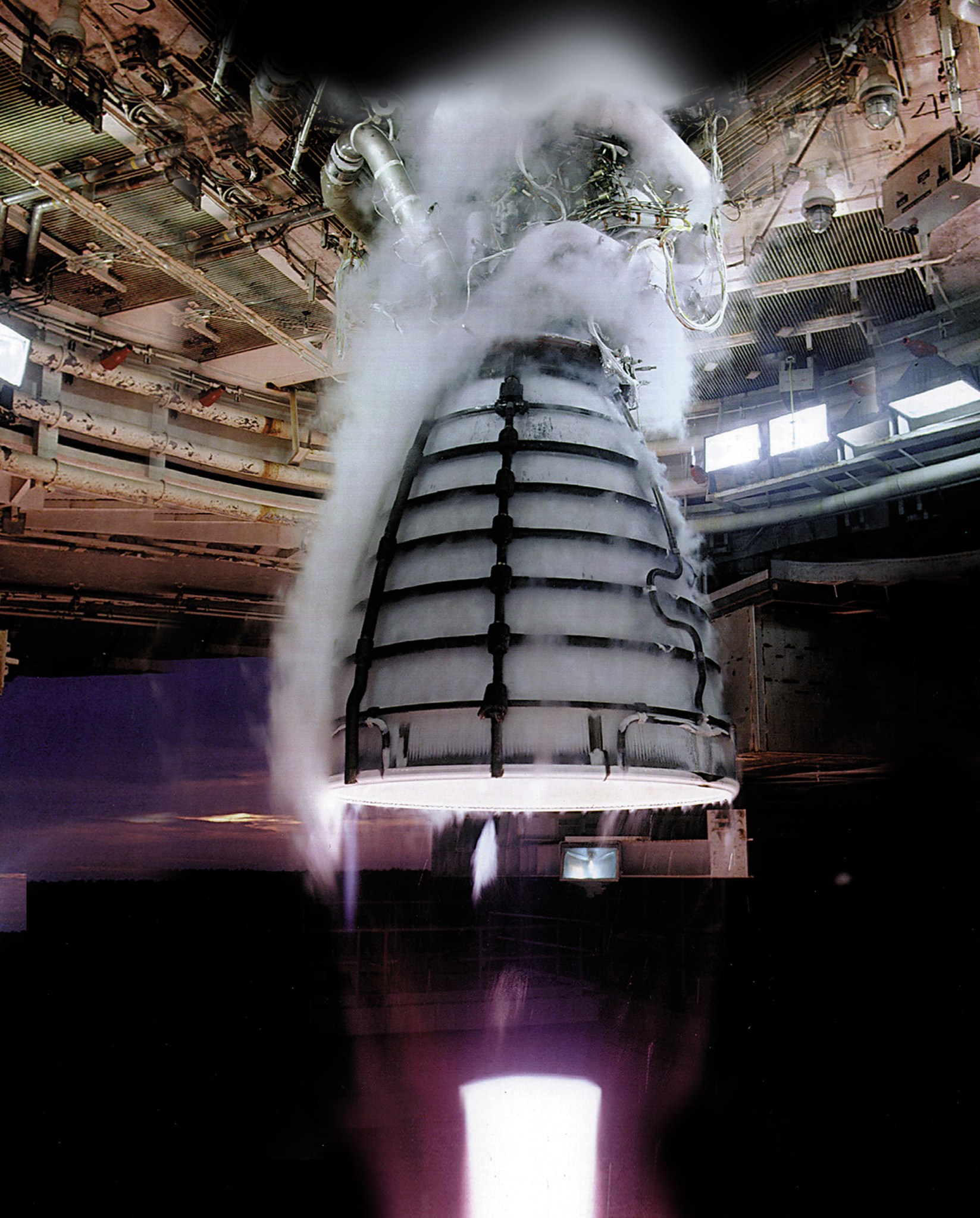The RS-25 engine that will power NASA’s new rocket, the Space Launch System (SLS), off the launch pad and on journeys to an asteroid and Mars is getting ready for the test stand. And it is packing a big punch.
Engineers at NASA’s Stennis Space Center near Bay St. Louis, Miss., are now focusing their attention on preparing the RS-25 engine after completing testing of the J-2X engine April 10. Four RS-25 engines, previously known as space shuttle main engines, will muscle the core stage of SLS for each of its missions. Towering more than 200 feet tall with a diameter of 27.6 feet, the core stage will store cryogenic liquid hydrogen and liquid oxygen that will feed the vehicle’s RS-25s.
Modifications to the engines, like higher thrust levels, were needed on the proven workhorse to prepare them for the SLS. To accommodate a higher thrust level, the number of engines was increased from three, used during the shuttle era, to four. The power level also was increased for each engine.
Engines on the shuttle ran at 491,000 pounds vacuum thrust (104.5-percent of rated power level). After analyzing temperature and other factors on the engine, the power level was increased for SLS to 512,000 pounds vacuum thrust (109 percent of rated power level).
Modifications also have been made to the A-1 test stand at Stennis to prepare for the RS-25’s first hot-fire test.
The completed J-2X test series provided many benefits as RS-25 enters the stand.
Watch a video of the J-2X engine test:
“From the start, testing of the J-2X engine progressed at an incredible pace and provided invaluable data,” said Gary Benton, J-2X and RS-25 test project manager at Stennis. “We began J-2X powerpack testing for the engine in late 2007 and conducted a wide range of full-engine developmental tests since then. We have collected data on engine and test stand capabilities and performance that will benefit the nation’s space program for years to come.”
A number of J-2X test objectives offer benefits to the upcoming battery of RS-25 tests, including defining the performance, control and data characteristics of the test stand, and new processes used to record and interpret engine performance data.
Many of the modifications made on the A-1 test stand are based on improvements made throughout J-2X testing. For example, RS-25 thrust measurement, data collection, engine control system architecture and control of propellant conditions at the engine inlet all will be based on J-2X test experience.
Another strength the RS-25 test team will inherit is experience. The test crew and data review team have continually improved the efficiency of test operations leading up to RS-25 testing.
“We’re gearing up for what we trust will be a successful and essential RS-25 test series — technically as well as on cost and schedule — and our J-2X experience directly contributes to this need,” said Tom Byrd, deputy manager in the SLS Liquid Engines Office at NASA’s Marshall Space Flight Center in Huntsville, Ala. The SLS Program is managed at the Marshall Center. “The manufacturing and testing we just completed will continue to be beneficial to the RS-25, the SLS Program and the agency’s initiatives.”
As future missions are defined for the 130-metric-ton vehicle — the largest configuration planned — NASA will consider various engine options that are the best value and design.
For more information on SLS, visit:
Media Contacts:
Kim Henry
Marshall Space Flight Center, Huntsville, Ala.
256-544-0034
kimberly.m.henry@nasa.gov
Rebecca Strecker
Stennis Space Center, Miss.
228-688-3249
rebecca.a.strecker@nasa.gov


























